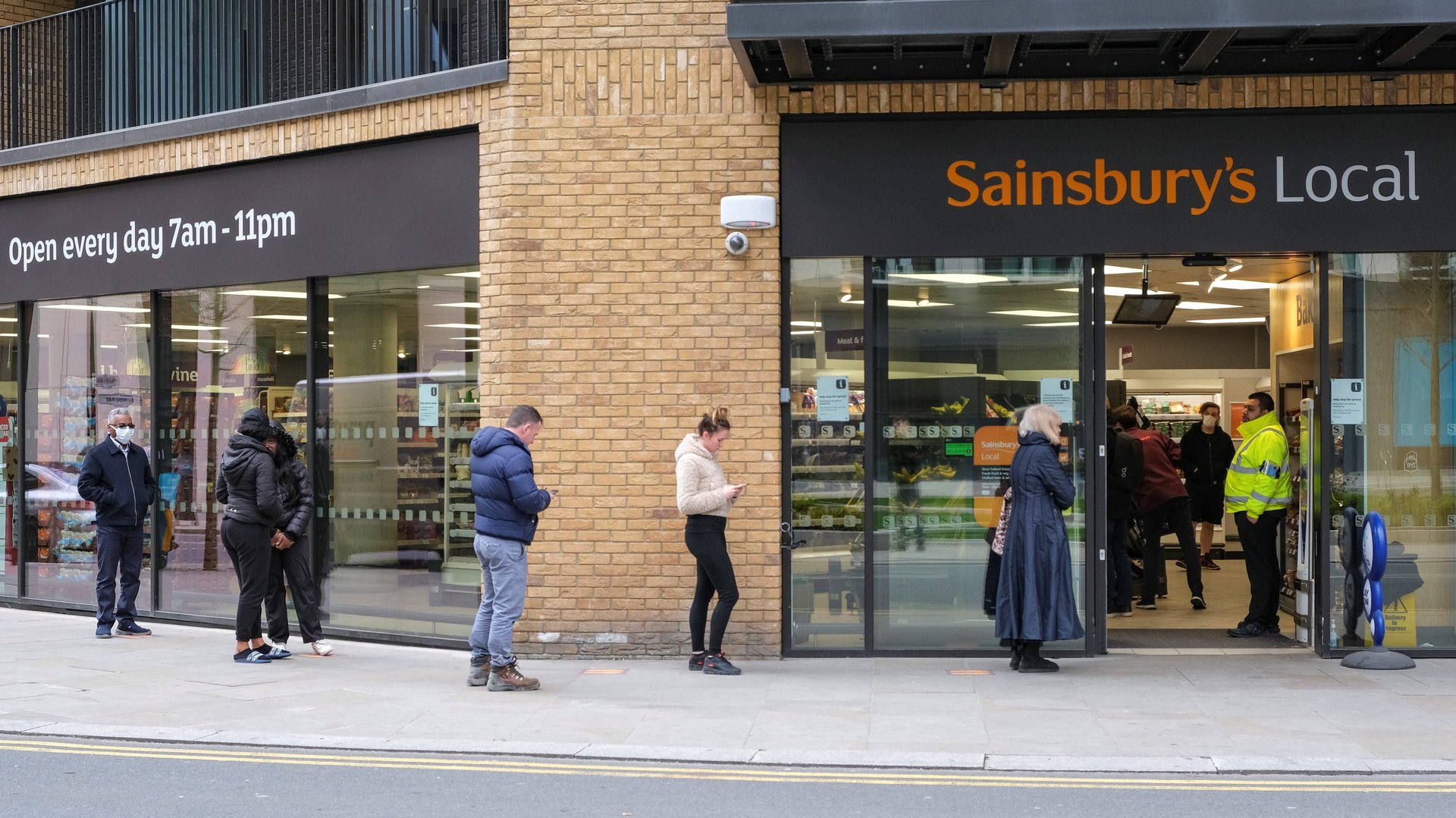Record grocery sales are coming at a cost for supermarkets
After a rocky start, UK online grocer Ocado has become a standout performer during the coronavirus pandemic.


After a rocky start, UK online grocer Ocado has become a standout performer during the coronavirus pandemic.
Revenue is up 40% from the previous year, and the stock has soared a similar 40% since January. Ocado still can’t fully meet demand from existing customers and its virtual shop remains closed to new ones. Customers are ordering bigger baskets. Warehouses are running at peak efficiency. And yet, Ocado chief financial officer Duncan Tatton-Brown told investors in an update May 6, the company is no more profitable than before the pandemic.
This is the new challenge for grocery stores. While demand for their goods and services has never been higher, the costs of meeting that demand are also high. Grocery companies are paying staff more to come in, investing in protective measures for customers and employees, and shouldering logistics costs as they expand delivery and pickup operations. That means record sales haven’t necessarily translated into fatter margins.
French supermarket Carrefour beat expectations with €19.4 billion ($21 billion) in sales in the first quarter. Like other grocers, Carrefour saw demand for online groceries soar, while customers shopping in stores visited less frequently and bought more each time. But costs also ballooned, with staff bonuses, new equipment, and new processes to create services for vulnerable shoppers.
“Of course, they are not profitable,” Matthieu Malige, Carrefour’s chief financial officer, told investors on a call in late April, “and that was not the choice we’ve made at this moment. So all in all, as you understand, we have this process linked to the volume, and we have this exceptional cost linked to the choice of responsibility of protection, of recognition for our employees.”
Other supermarkets, like Sainbury’s in the UK, have found the bump in grocery sales unable to offset bigger losses elsewhere in their retail operations. Sainsbury’s recently warned of a £500 million ($619 million) hit to this year’s profit on weak demand for fuel, clothing, and other merchandise, which it said would largely be offset by tax relief from the government, and a bit by stronger grocery sales. Sainsbury’s also said the costs to implement social distancing protections were eating into its profit. Analyst firm Bernstein now expects Sainsbury’s to book £592 million in profit before tax in 2020.
Albertsons, a national US supermarket chain that is in the process of going public, warned in a securities filing on May 5 that while Covid-19 safety investments have so far been “more than offset by increased sales,” it may need to sustain such costly measures even after the pandemic boom for grocery fades.
Most national US grocery chains like Kroger, Target, and Walmart have yet to report first-quarter results, but as many of these stores have invested similarly in better pay for staff and increased protections for employees and shoppers, they will likely see costs rise as well.